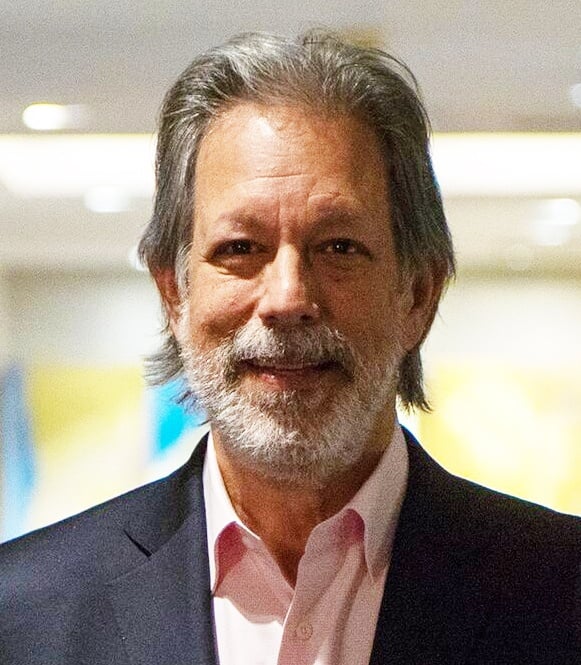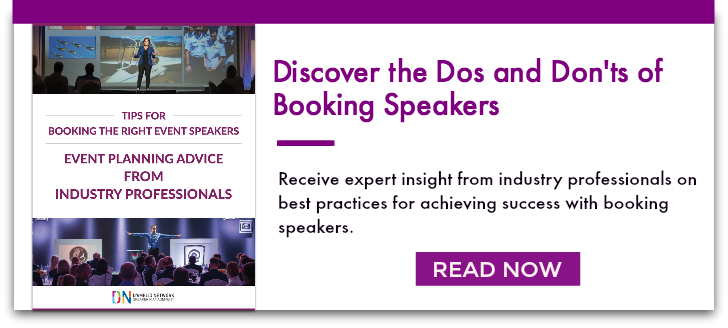Public Speaking: Top Keynote Speakers’ Rule for Great Speech Delivery
In my previous life as a speakers’ agent for top keynote speakers, I worked with a well-known non-fiction author whose name you would know; someone really well respected.
That author did a lot of speaking on the strength of impressive book sales; multiple #1 New York Times bestsellers. The author was a good speaker. I say “good” because rarely was the sponsoring organization disappointed with the speech – but the author never got an emphatic, “That was great!” reaction from the event planner. When I would go to see this author speak, I loved the content but would come away a bit disappointed because the speech was read…word for word…while looking up occasionally.
The reviews were always good but not fantastic like they should have been for someone charging this kind of fee.
I think you can thank TED for raising the bar of audience expectations on speech delivery. Those nice compact talks, which are generally coached for months before actually being delivered, have caused audiences to expect speakers to be as focused on engaging the audience as informing them.
Back to this author who was handcuffed to the script when delivering the speech. Fast-forward to an event this author did for me several years ago. The author took the stage, and while squarely behind the lectern, to my great surprise, they looked up at the audience 95% of the time. The audience responded. They were more engaged than anything I’d seen in previous speeches. Note cards were used, but they were referred to infrequently.
The big point was the speech was not read word-for-word as in the past. The difference was extraordinary. The audience felt the connection and gave this speaker a standing ovation like they’d not received before.
After the talk, I walked up to the author and said, "you're not reading your speech! When did you change?" This author told me the “a-ha!” moment came during one of our big company events where several of our top keynote speakers we represented from government, media, and sports all spoke. Not one read or even used notes. None of them stood behind a lectern, either. That made a huge impression on this author who then decided to make a change.
At the root of this speaker’s preference for reading the speech was the writer’s mindset. Writing is a meticulous craft. And this author told me, their approach to speaking was to tell the perfect story with every detail in the right place. But what they realized in watching keynote speeches by a parade of other top speakers was that no one in the audience would ever know if the story wasn't perfect.
So what’s the lesson here? To me, it’s to put connecting first and perfection down the line a bit. It’s the hardest speech delivery rule for infrequent speechmakers to follow – and my point here is that it can be hard for the pros, as well. But if you know your content, speak from the heart (read: be authentic!), and have the end result in mind, it’s much easier to engage by just referring (if at all) to a few notes and maybe even (another scary idea) stepping away from the lectern altogether as the top keynote speakers do.
Supplemental Reading:
Event planner career choices: Could you be a speakers' bureau agent?,
Event Planner’s Worst Nightmare: Keynote Speaker Damage Control and
The Perfect VIP Photo Opp: Tips for Your Event Planning Checklist
I had to take my own advice on all this back in 2011 when I led the effort to start a foundation in Stamford, Connecticut called Stamford Dollars for Scholars. We wanted to create an organization that stood for college scholarships in our community because no other group did. It was a passion of mine – and as we started this organization from scratch, I found myself having to talk to groups big and small all over the city. As much as I’d been around speakers and performers all my life, getting up and speaking myself was something that was far from natural for me. I wanted to make every point perfectly and referred to a written text instead of looking into the eyes of my audience. My connection with the audience suffered.
I quickly began doing what I would tell my speaking clients to do – prepare, trust yourself, and speak from the heart. It worked! Even better, it didn’t take long before I was actually more comfortable out front – without a lectern and just a few notes. It made a world of difference in how I connected with the people in the room. I just needed to be brave enough to try it. I survived the experiment - I’m still alive and the world didn’t end. If I missed a point of messed up on something, it came out in Q&A – or it didn’t matter at all.
For anyone delivering a speech, engage the audience by following the speech delivery tip top keynote speakers follow: skip the script, use a few notes (if you must) to keep you on track and come out from behind the lectern. It might feel like a big leap, but it won’t take long until it feels natural and comfortable. As a speechaphobe, I speak from experience on that one.
About Tony D'Amelio
Tony has spent his career putting talented people and audiences together, first in the music business and later representing the world's leading speakers. After concluding 27 years as Executive Vice President of the Washington Speakers Bureau, Tony launched D'Amelio Network, a boutique firm that manages the speaking activities of a select group of experts on business, management, politics and current events. Clients include: Mike Abrashoff, Mariana Atencio, Chris Barton, Lisa Bodell, Geoff Colvin, Daryl Davis, Suneel Gupta, Ron Insana, Katty Kay, Polly LaBarre, Nicole Malachowski, Ken Schmidt, and Bob Woodward.

.png)

.jpg)

